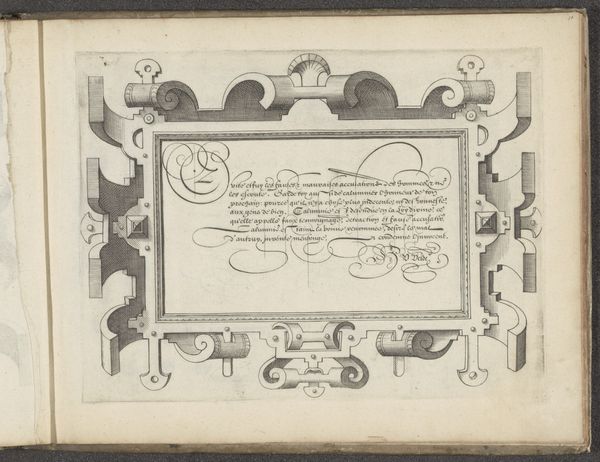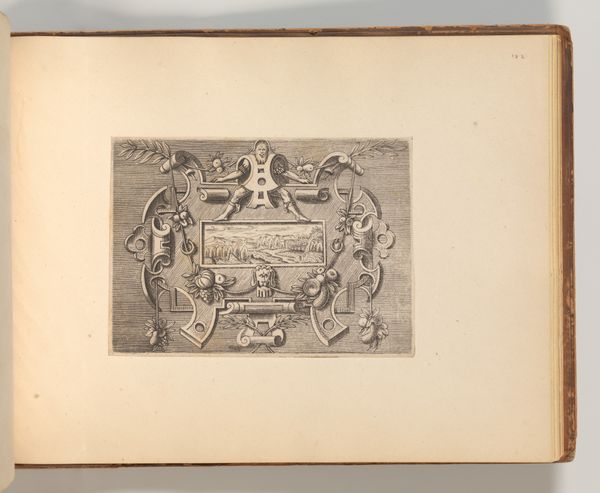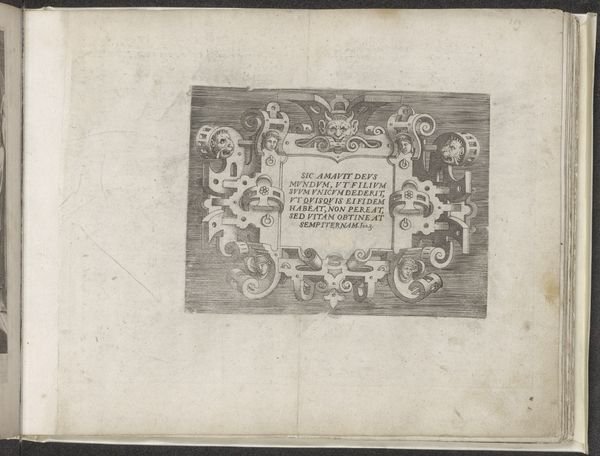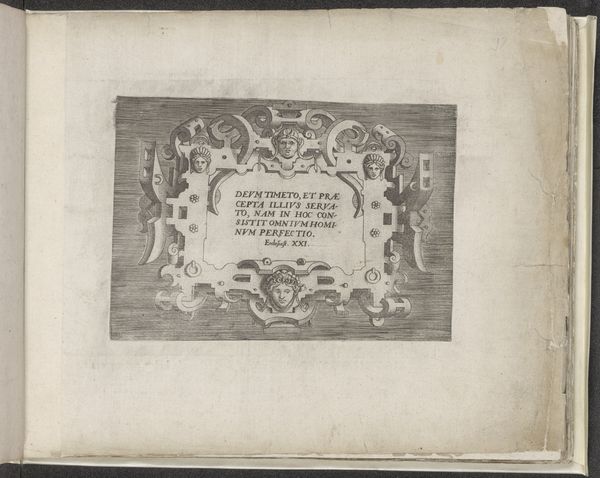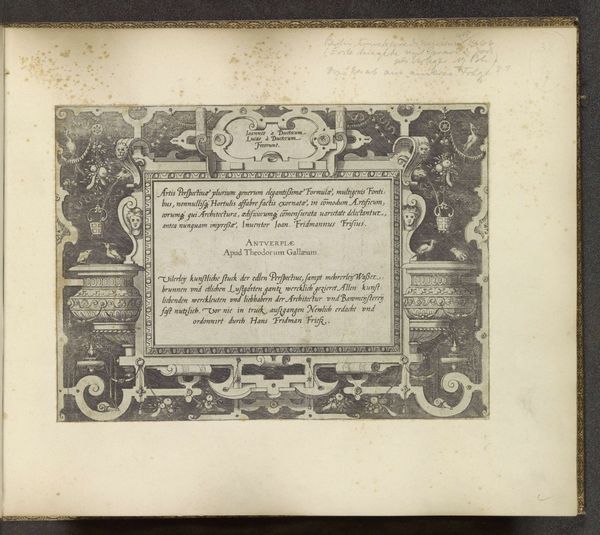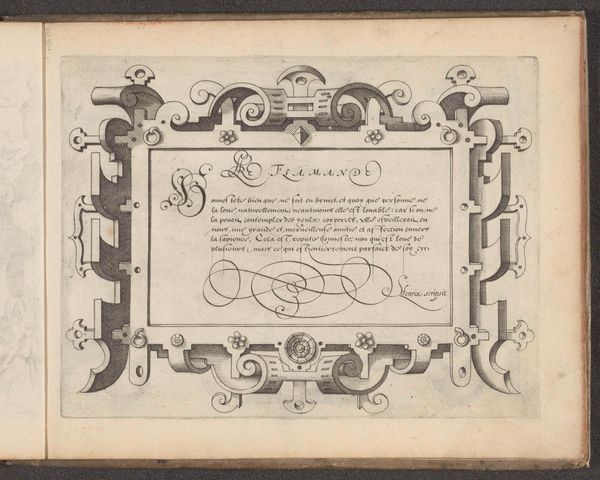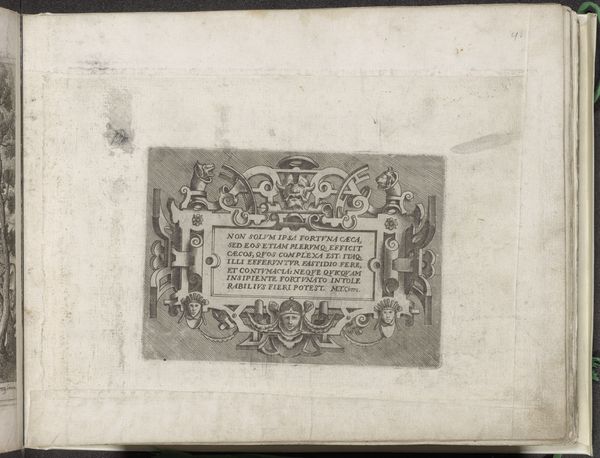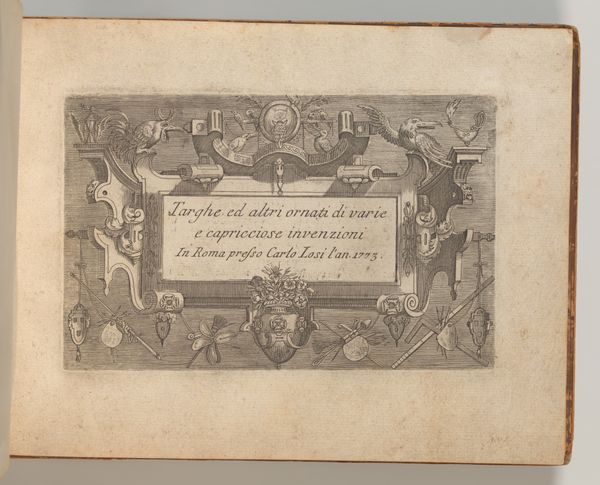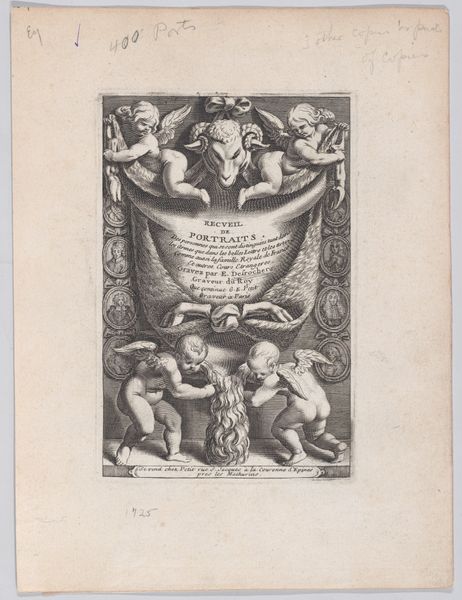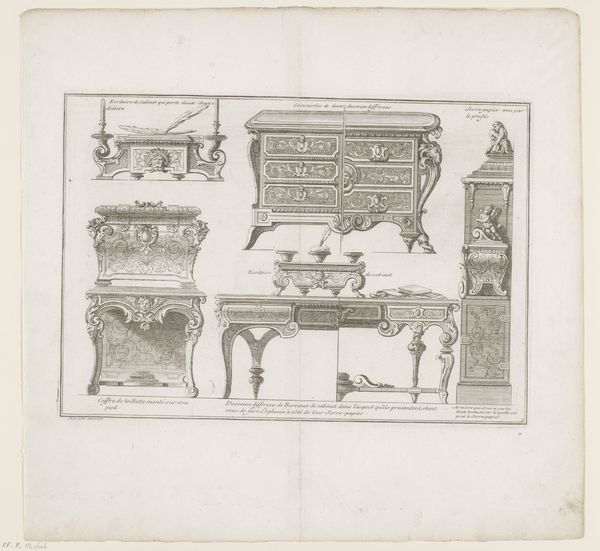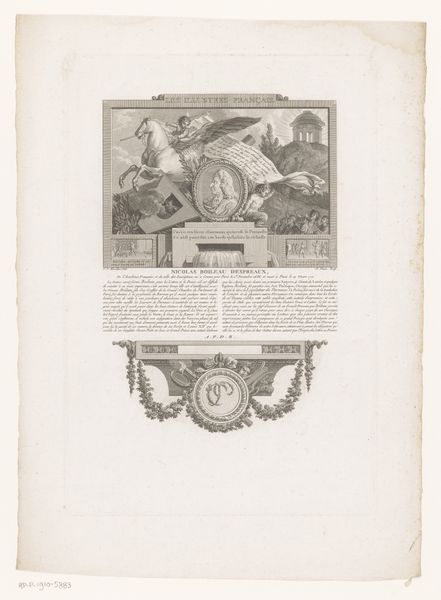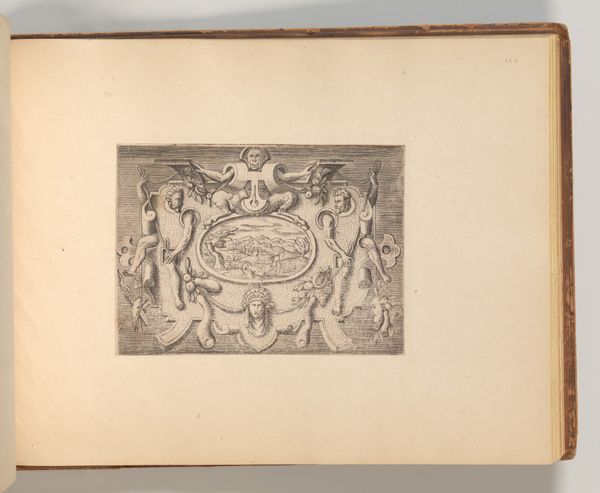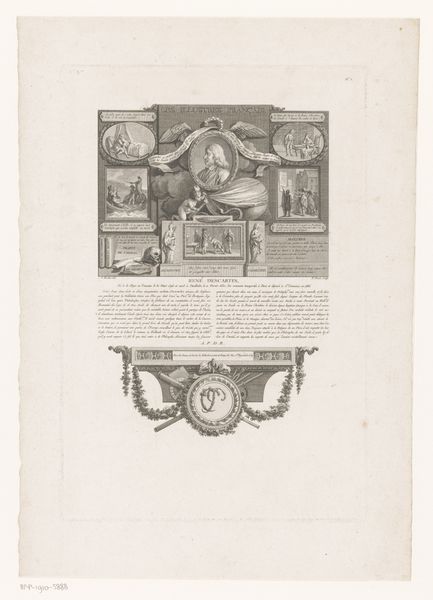
Cartouche in een omlijsting van rol- en beslagwerk met twee putti en menselijke botten en schedels als trofeeën 1563
0:00
0:00
johannesoflucasvandoetechum
Rijksmuseum
drawing, print, paper, engraving
#
drawing
#
allegory
# print
#
mannerism
#
figuration
#
paper
#
form
#
vanitas
#
line
#
history-painting
#
northern-renaissance
#
engraving
Dimensions: height 163 mm, width 209 mm
Copyright: Rijks Museum: Open Domain
Curator: Let's spend some time with this intriguing engraving from 1563, “Cartouche in een omlijsting van rol- en beslagwerk met twee putti en menselijke botten en schedels als trofeeën," attributed to Johannes or Lucas van Doetechum and currently held at the Rijksmuseum. The intricate design just grabs my attention, how about you? Editor: Dark. That's the first thing that jumps out. The sharp lines, the contrasting dark areas. It feels… weighty, serious, almost oppressive. I mean, putti juxtaposed with skulls? What am I supposed to think? Curator: That contrast is key. This work falls squarely within the Mannerist style and draws from the Northern Renaissance's obsession with vanitas themes. Look at how meticulously the image is composed. What appears decorative—the scrolling foliage and those plump cherubs—is really a frame for the memento mori: the bones, the skulls. Editor: So, symbols of life and death clashing. How very dramatic. It's interesting how the artist employed the technique. The engraving must have been an exacting process given the detailed linework used for creating such varied textures within a fairly small space. Curator: Exactly. The very act of printing, of reproducing these images, speaks to the material concerns of the time. Printmaking allowed for a wider dissemination of these ideas, a democratization of sorts. But let's not forget, this wasn’t just about making art accessible; it was a business, driven by the need for patrons and markets. Editor: And what of the symbols beyond death? Are those putti meant to simply be decorative, or are they harbingers of hope for resurrection? The cultural memory is strong. Curator: Certainly. Putti, often associated with innocence and divinity, offer a stark contrast against the skeletal remains representing mortality, prompting thoughts on redemption. The cartouche, a decorative frame typically used for inscriptions, seems almost secondary to the vanitas symbols that surround it. Editor: The symbolism layered within these pieces—the cultural signifiers—still resonate today. Curator: I agree. Studying these elements gives insight into not just art, but into society itself. Editor: The image speaks to craft and culture existing to promote particular views through art, or should I say death? I found that to be fascinating. Curator: Exactly, these engravings act as fascinating visual testaments to their cultural and socio-economical standing.
Comments
No comments
Be the first to comment and join the conversation on the ultimate creative platform.
